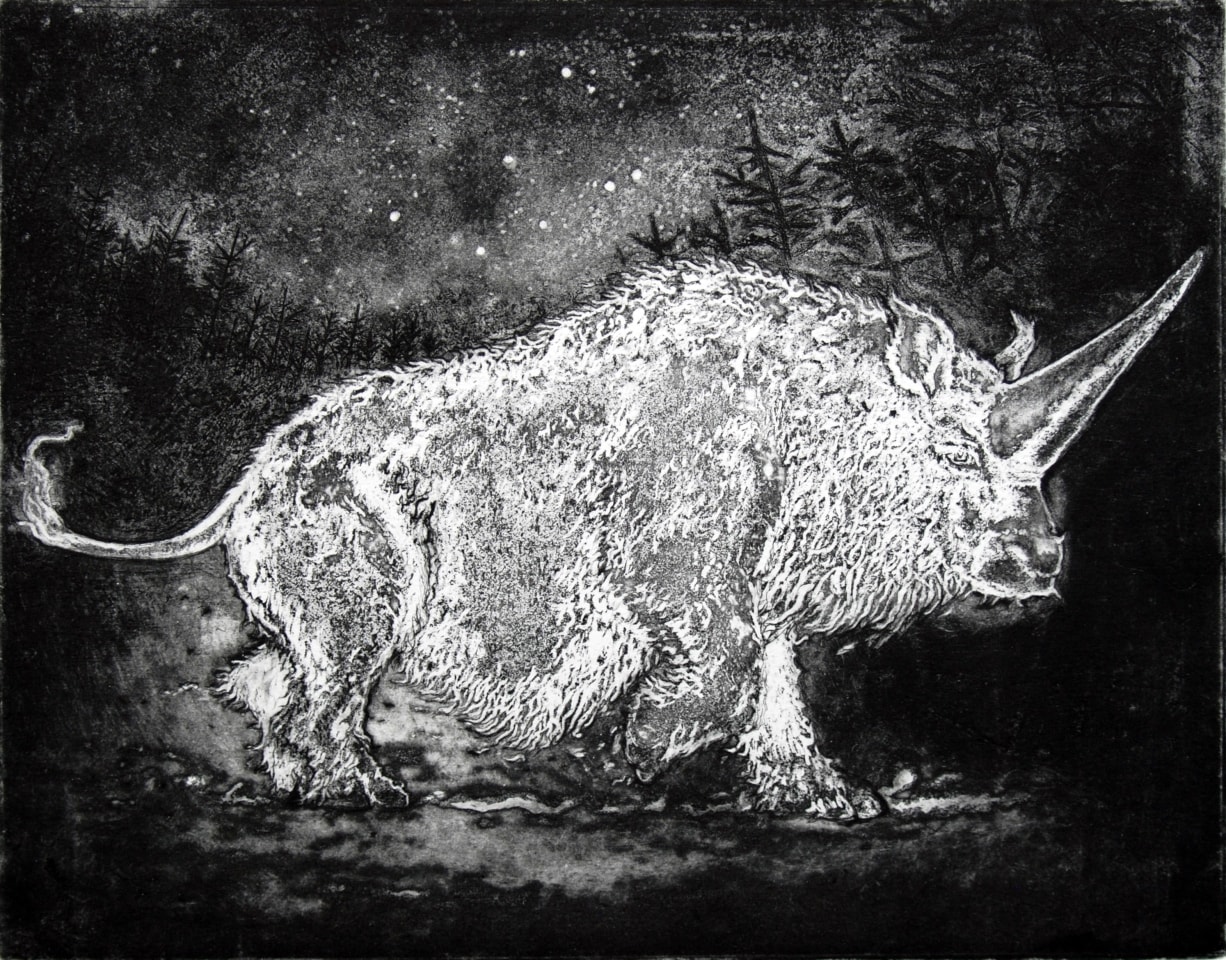Ghost of a Unicorn, 2023
Etching on Fabriano Unica paper 250gsm
30 x 42 cm
11 3/4 x 16 1/2 in
11 3/4 x 16 1/2 in
Edition of 10
‘Ghost of a Unicorn’ is a delicate and haunting etching: it is Wassall’s interpretation of an Elasmotherium Sibiricum, also known as the Siberian Unicorn. A 2018 study using cutting-edge radiocarbon...
‘Ghost of a Unicorn’ is a delicate and haunting etching: it is Wassall’s interpretation of an Elasmotherium Sibiricum, also known as the Siberian Unicorn.
A 2018 study using cutting-edge radiocarbon dating, led by Professor Adrian Lister, Merit Researcher at the Natural History Museum, London, confirmed that unicorns lived as recently as 35,000 years ago, a far cry from the 100 - 200,000 years previously believed. This means unicorns were roaming the Eurasian grasslands alongside modern humans, proving the point, ‘Unicorns are Real’.
Our current vision of unicorns is informed by classical antiquity; an elegant beast with a single pointed horn. However, Wassall reimagined this real and mythical creature as a glowing ghost of its former self. Keeping the essence of the unicorn’s magic and mystery she researched skeletal structures of Siberian Unicorns, resulting in a beast that is almost unrecognisable.
This raises questions about what information early man passed onto later generations. What forces were at play in this multi-millennial game of Chinese whispers? What transformed this mighty beast into a white horse-like animal, infused with cultural symbolism, to the point where it stopped being something real?
A 2018 study using cutting-edge radiocarbon dating, led by Professor Adrian Lister, Merit Researcher at the Natural History Museum, London, confirmed that unicorns lived as recently as 35,000 years ago, a far cry from the 100 - 200,000 years previously believed. This means unicorns were roaming the Eurasian grasslands alongside modern humans, proving the point, ‘Unicorns are Real’.
Our current vision of unicorns is informed by classical antiquity; an elegant beast with a single pointed horn. However, Wassall reimagined this real and mythical creature as a glowing ghost of its former self. Keeping the essence of the unicorn’s magic and mystery she researched skeletal structures of Siberian Unicorns, resulting in a beast that is almost unrecognisable.
This raises questions about what information early man passed onto later generations. What forces were at play in this multi-millennial game of Chinese whispers? What transformed this mighty beast into a white horse-like animal, infused with cultural symbolism, to the point where it stopped being something real?
